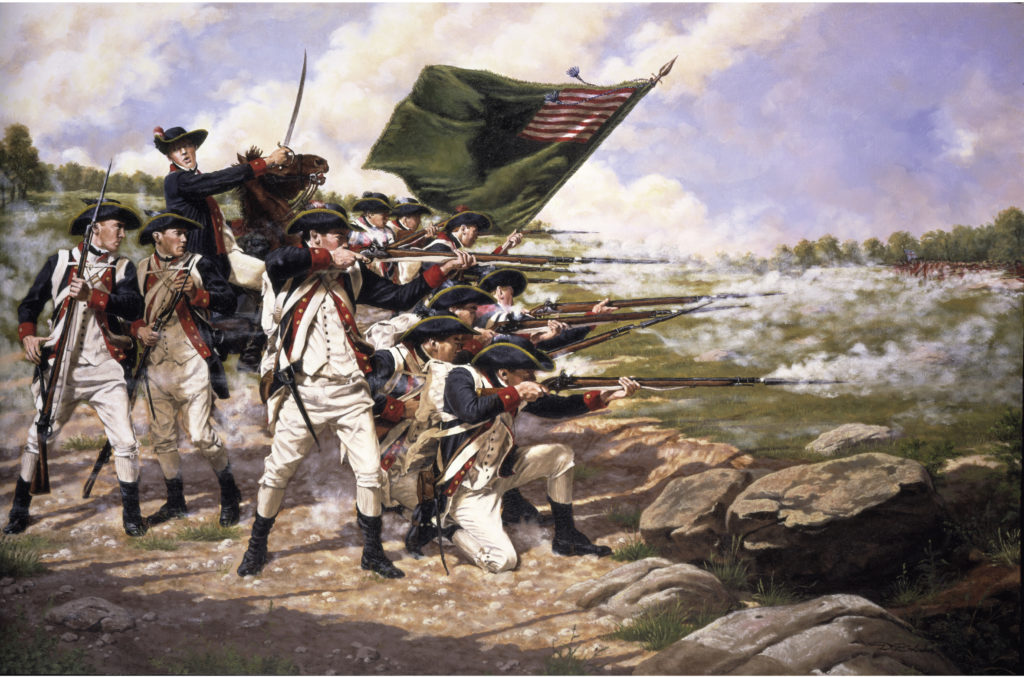
Brooklyn, New York — August 27, 1776
Colonel Henry “Light-Horse Harry” Lee, a hero of the Revolutionary War and father of Robert E. Lee, once commented that during the war “the state of Delaware furnished one regiment only; and certainly no regiment in the army surpassed it in soldiership.” At the Battle of Long Island, the actions of the Delaware Regiment kept the American defeat from becoming a disaster. Fighting alongside the 1st Maryland Regiment, the soldiers from Delaware may well have prevented the capture of the majority of Washington’s army – an event that might have ended the colonial rebellion. Organized in January 1776 by Colonel John Haslet, the Delaware Regiment was noted as the best uniformed and equipped regiment of the Continental Army. Delaware’s blue jackets with red facings and white waistcoats and breeches would later become the uniform for all the Continental troops. During the Battle of Long Island, the Delaware and Maryland troops were positioned on the right of Washington’s line. They defended the most direct route from the British landing site in south Brooklyn to the American fortifications in Brooklyn Heights. Though the troops faced the fiercest fighting of the day, they held their ground long enough to allow the remainder of Washington’s army to safely retreat to the fortifications. However, the Delaware regiment was outflanked and forced to retreat, taking 23 prisoners with them, through marshland and across the Gowanus creek. Two nights later, Washington entrusted his Delaware and Maryland soldiers to be the rear guard as he secretly withdrew his army from Brooklyn to Manhattan. Today, the 175th Infantry Regiment, Maryland Army National Guard, preserves the legacy of the 1st Maryland Regiment. The 198th Signal Battalion, Delaware Army National Guard, perpetuates the proud lineage of the Delaware Regiment.

